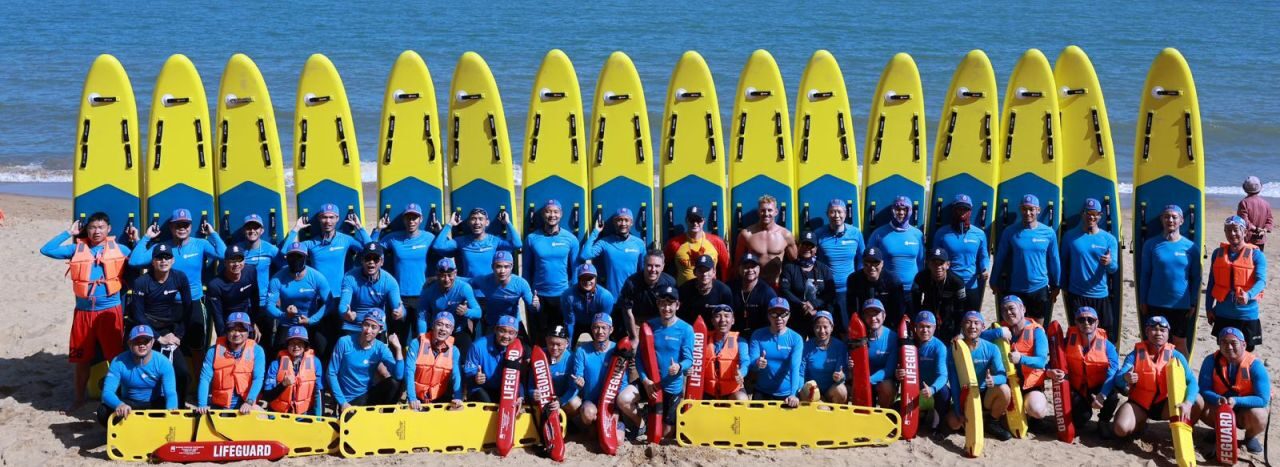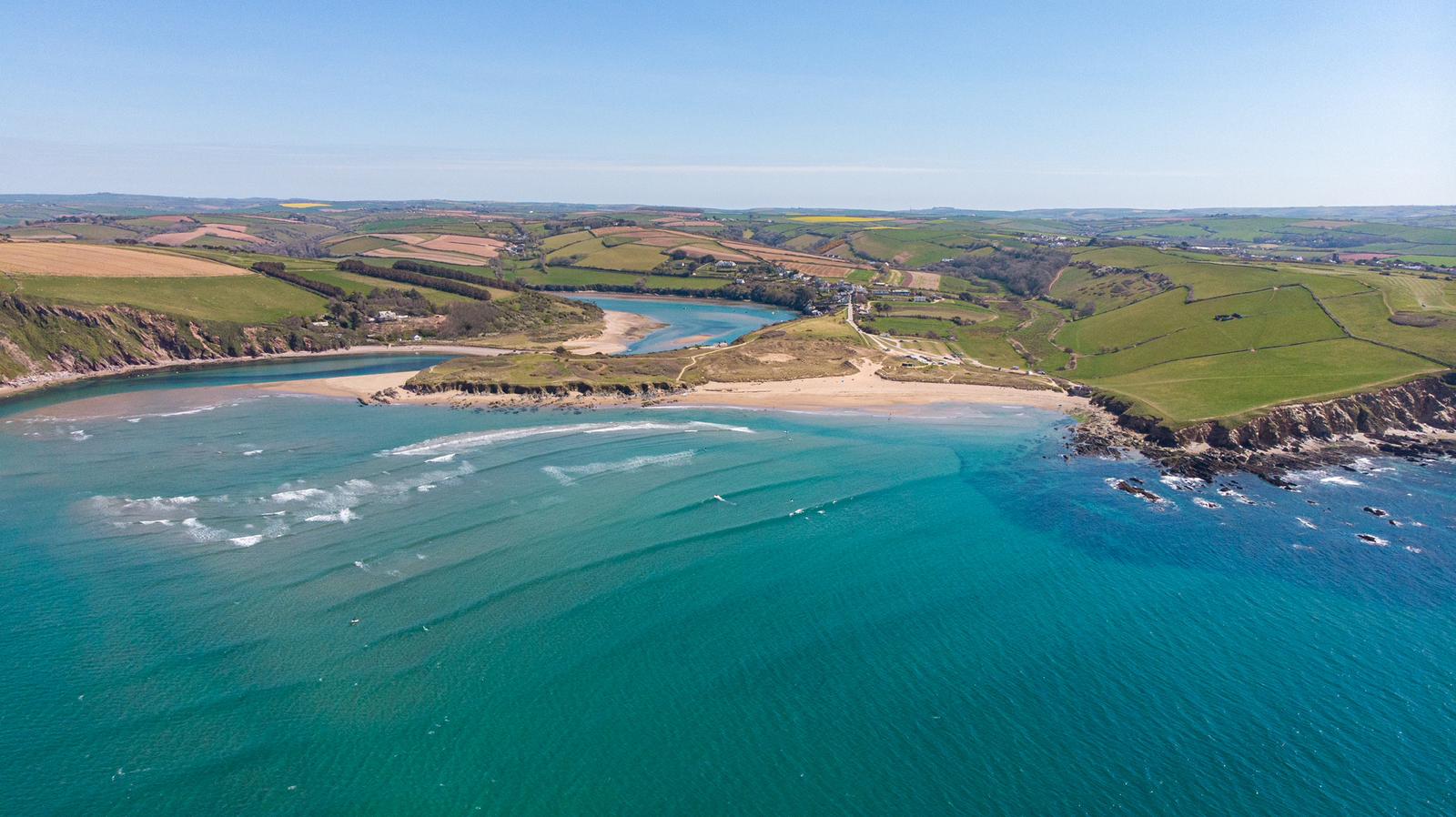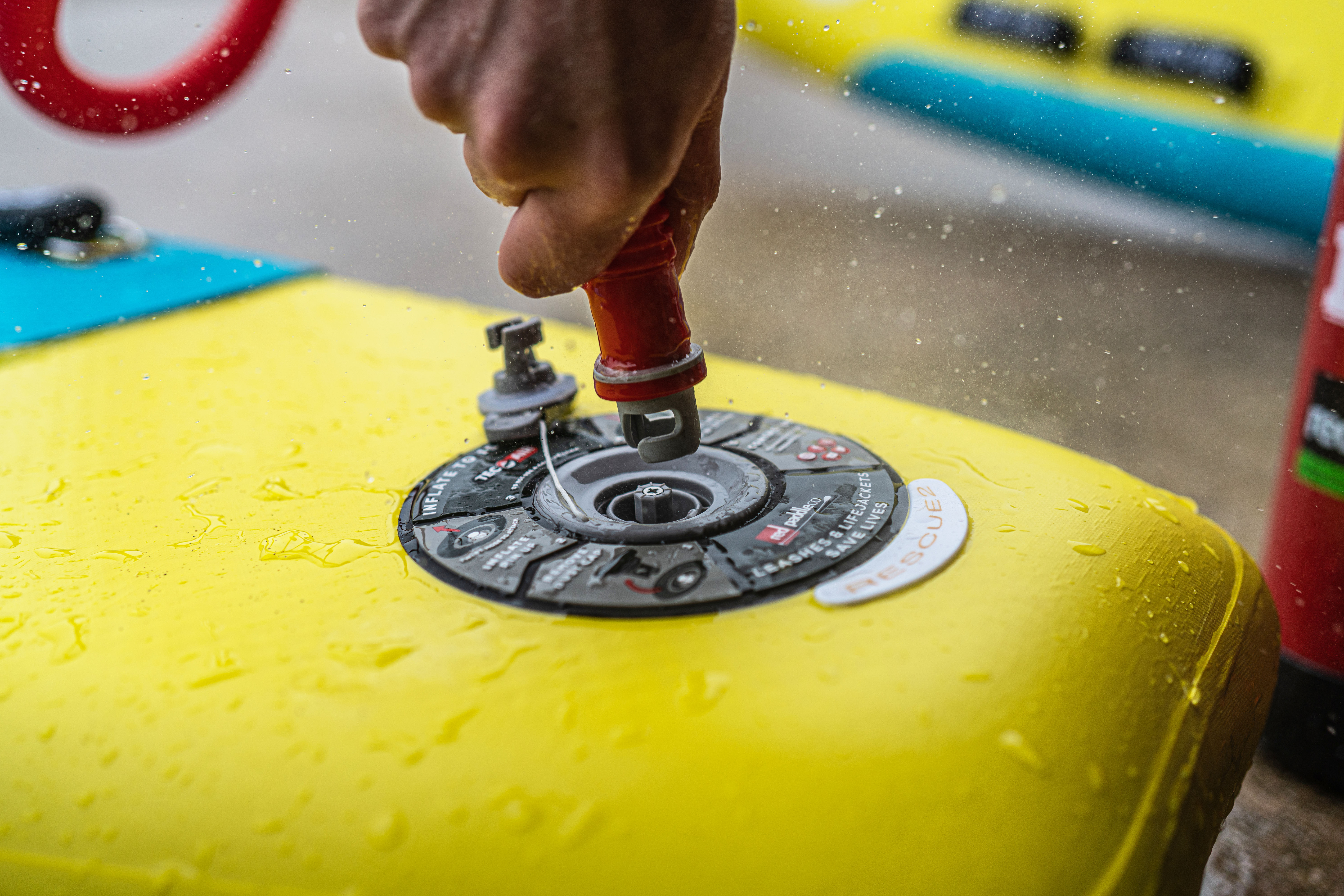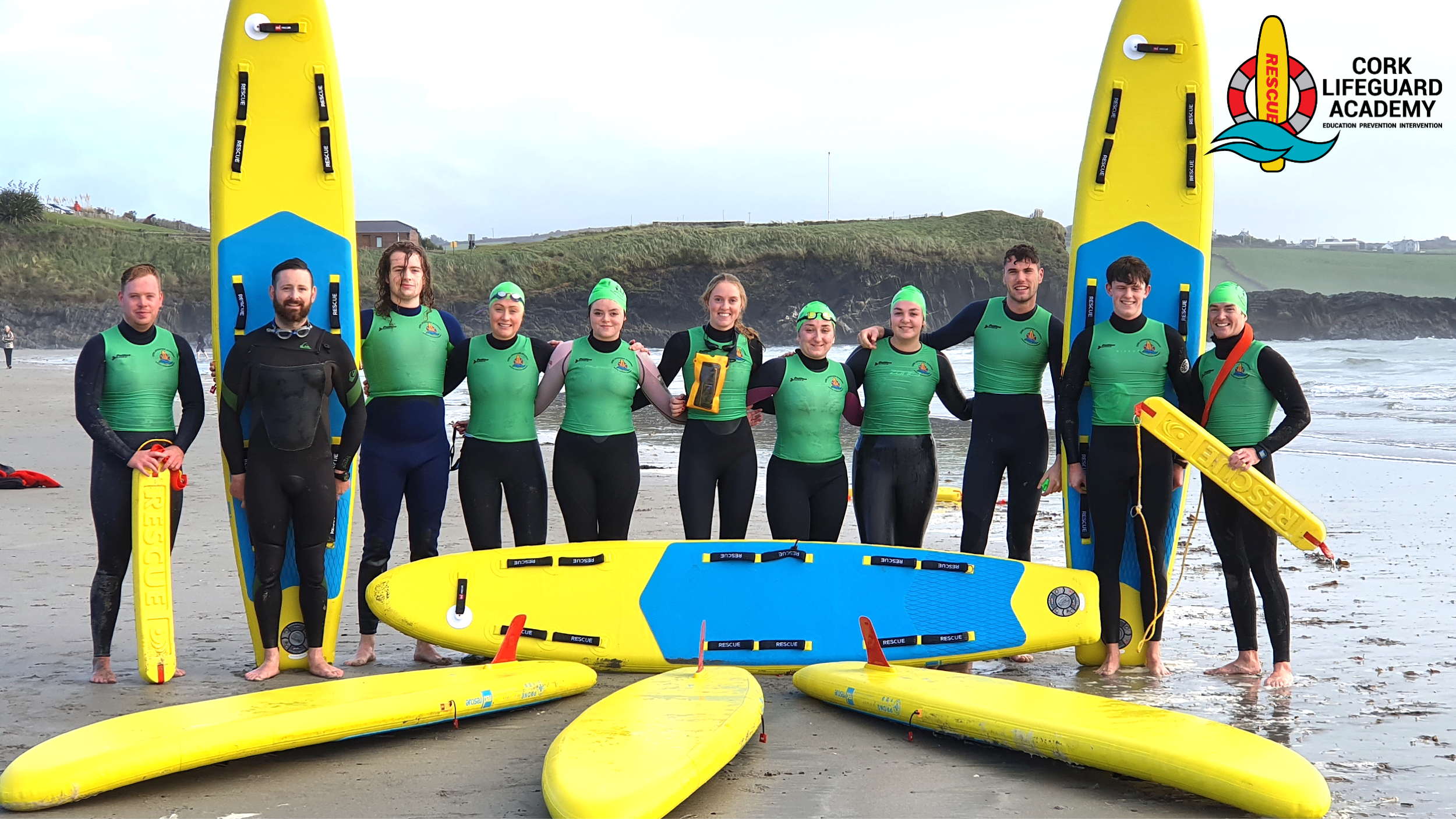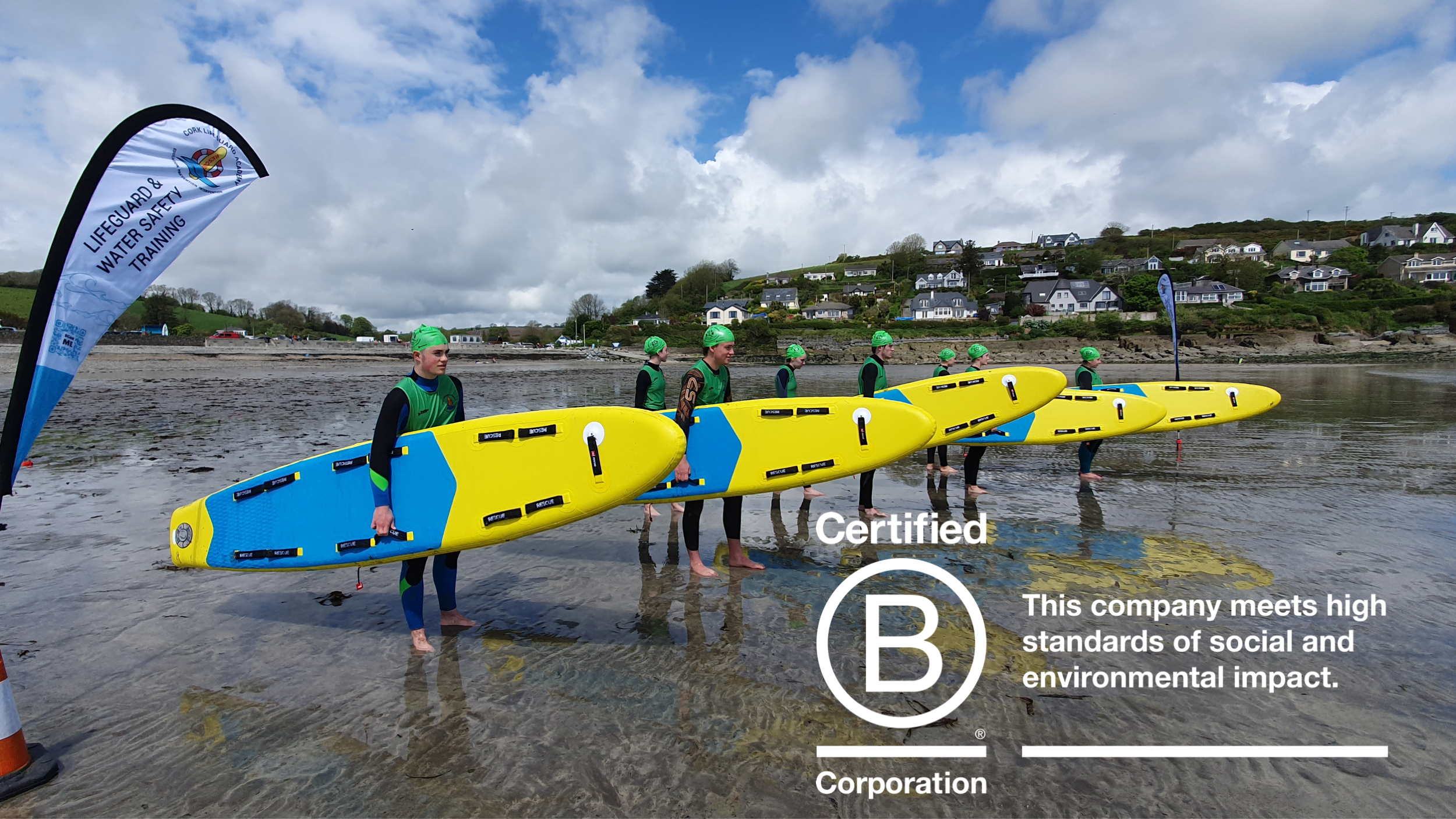Since the pandemic, Open Water Swimming has exploded in popularity. New groups and events are being created all the time and there is an ever-expanding need for effective and qualified safety cover, both for training and for event days.
Whether you are small club looking to keep your swimmers safe, or an established water safety company picking up new contracts for safety cover opportunities, picking the right gear for the job is all important. Historically, sit on top and enclosed kayaks have often been used to as a rescue craft. We spoke to Muirtí O’Cearnaigh of Atlantic Coast Lifeguards. As someone who is no stranger to on-water event safety cover, we asked him why he chooses inflatable Red Rescue boards over kayaks when supporting swimmers.
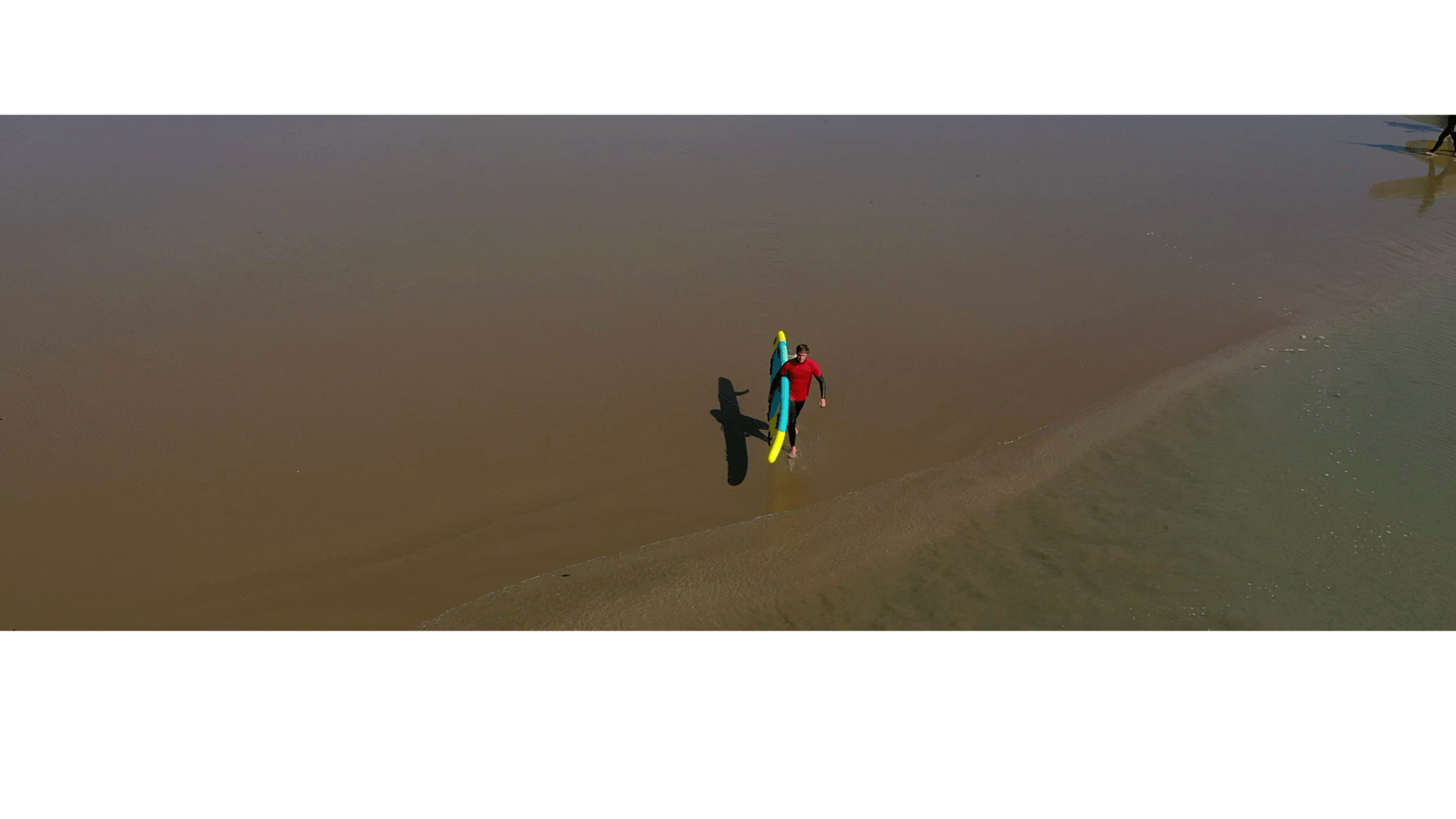
“In my opinion, with 24 years working in the business of rescue and outdoor water-sports, I struggle to see why people use kayaks to try and rescue swimmers at events – this may be because that is what they have available and what they are used to, but I feel that there are some serious flaws to this approach to lifesaving at swim events.
As I see it, if a person needs rescuing in the water during a swim and the rescuer is on a kayak – they are limited in how they can help them and the risks to the lifesaver and water users are increased. They can aid the casualty and offer a moment to relax for sure, however there are four key reasons I believe this should be avoided:
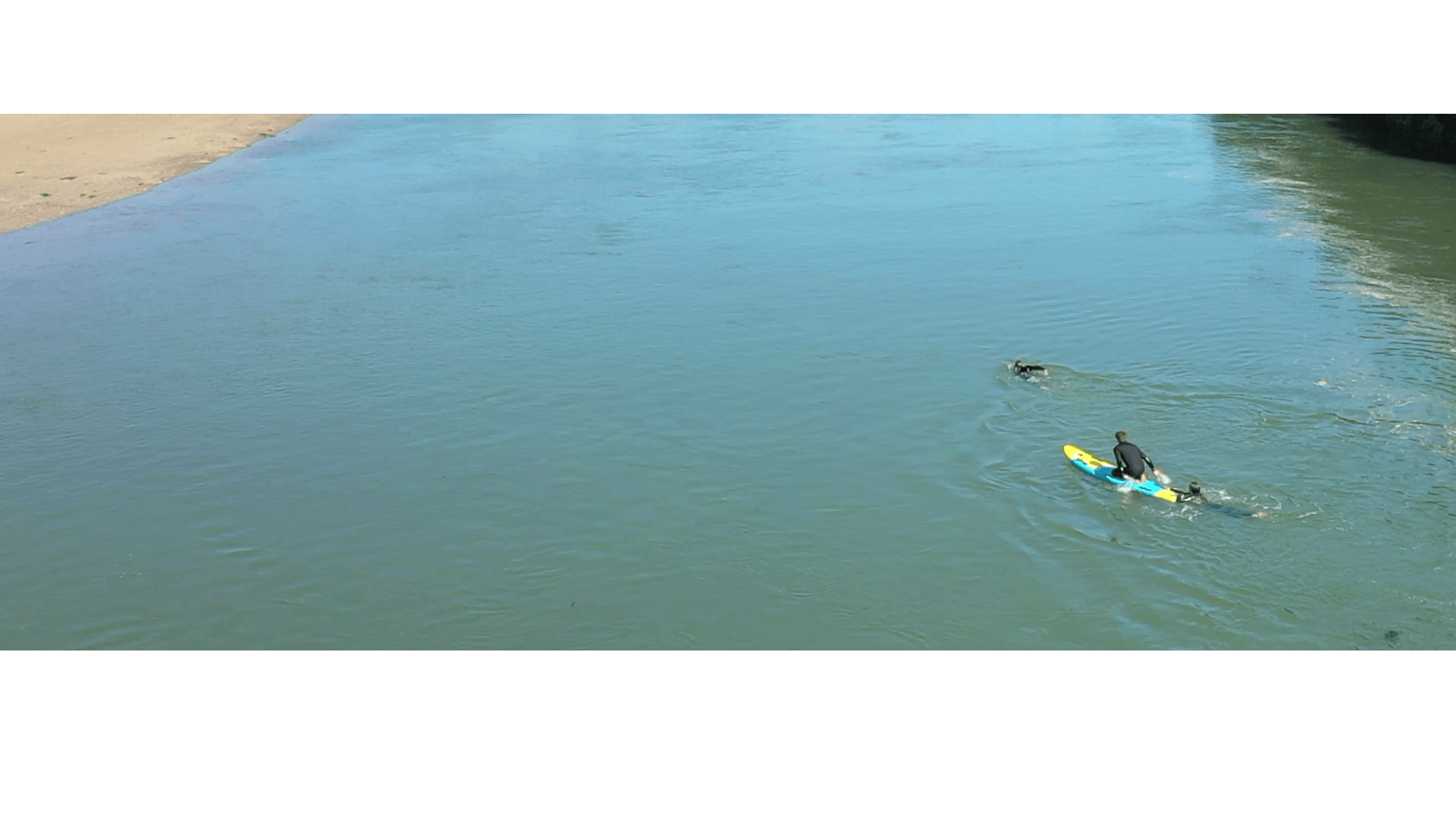
1. SAFETY OF THE LIFESAVER
When approaching a casualty in a kayak, if the swimmer is panicked then they can easily topple the kayaker over, leading to two people in the water, a turned over kayak and still the initial person still panicking. The centre of balance on a kayak is important as if the panicking casualty does not grab the nose and comes to the side, it is extremely easy to flip the kayak.
2. MULTIPLE RESCUES/SAFTEY OF GROUP
If a confident kayaker is able to get a person holding onto the nose of their kayak, then they should be able to paddle with the swimmer to the shore. However, this is difficult and the kayaker is now taken away from the rest of the group dealing with one person – a kayak can only manage to do this with one person at a time.
3. DANGER TO SWIMMERS
A kayak is heavy and bulky (as is the paddle) and is less easy to control in confined areas, this leads to a higher risk of causing injury by bumping into swimmers.
4. RESCUING AN UNCONSCIOUS SWIMMER
If a casualty is unconscious then there is no easy way of rescuing the swimmer in a kayak. Cardiac arrests are not uncommon when swimming and being ready and prepared to rescue an unconscious casualty is imperative. This is the biggest reason why I would not advise using kayaks for swim rescue.”
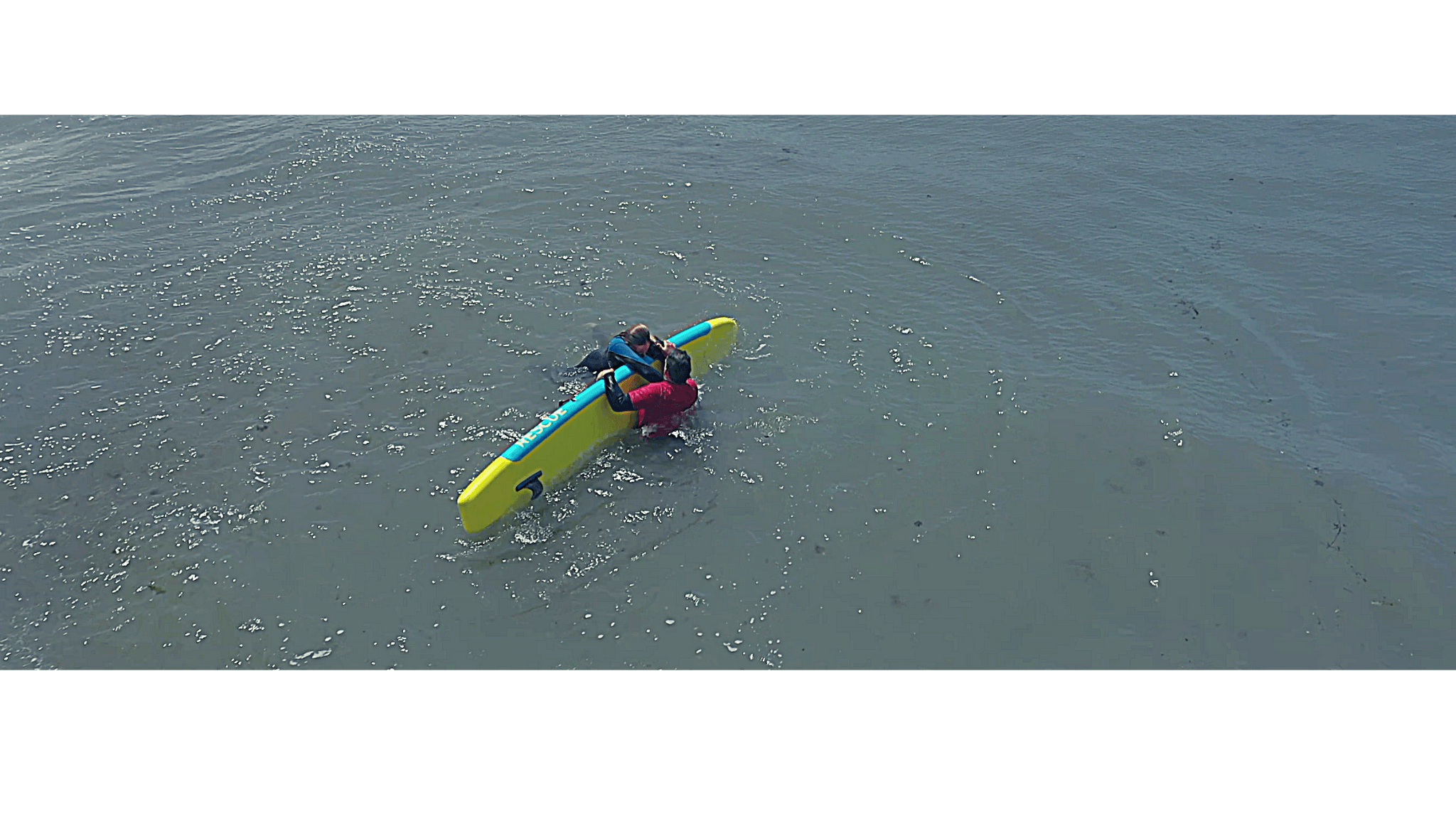
Having the right gear for the job is always a major key to delivering fast, effective safety cover. It is always important to assess the use and requirements of your safety equipment depending on the type of event or activity.
Our industry leading construction offers a super durable and safe board without compromising on performance in crowded conditions. Red Rescue inflatable prone boards are perfect for event cover or swim support craft as they can be easily packed away when not in use and easily transported.
Check out the range over here, or get in touch today to request a quote.


